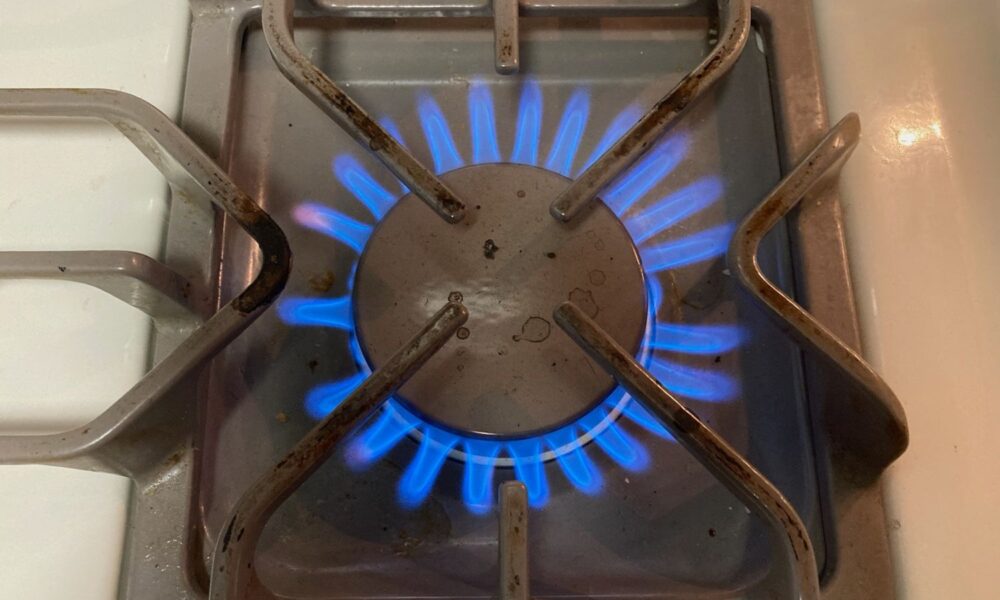In case you missed it, there was a firestorm last week in Washington over gas stoves.
Consumer Product Safety Commissioner Richard Trumka Jr. ignited the controversy last Monday when he said his agency, which regulates dangerous household products, should consider banning gas stoves because of the threat they pose to public health and the environment.
Members of Congress, mainly from the GOP, lit up the Twittersphere. “Democrats are coming for your kitchen appliances,” warned Arkansas Sen. Tom Cotton. “I’ll NEVER give up my gas stove,” exclaimed Texas Rep. Ronny Jackson, a former White House physician. “If the maniacs in the White House come for my stove, they can pry it from my cold dead hands.” Texas Sen. Ted Cruz was more succinct, daring the Consumer Product Safety Commission (CPSC) to “come and take it!”
At least one fossil fuel-friendly Democrat stoked the fire, too. “The federal government,” West Virginia Sen. Joe Manchin declared, “has no business telling American families how to cook their dinner. I can tell you the last thing that would ever leave my house is the gas stove that we cook on.”
Two days later, CPSC Chair Alexander Hoehn-Saric issued a statement clarifying the agency’s position, explaining that the agency is not planning a ban but is investigating ways to curb toxic stove-related emissions. Even the White House felt compelled to jump into the fray. White House press secretary Karine Jean-Pierre was unequivocal. “The president does not support banning gas stoves,” she said last Wednesday at her daily press briefing. “And the Consumer Product Safety Commission, which is independent, is not banning gas stoves.”
Such assurances did little to tamp down the conflagration, however, and the ensuing debate generated a lot more heat than light. What seemed to get lost in the scrum is the fact that there is overwhelming scientific evidence that Americans cooking with gas may well be subjecting their families to harmful indoor pollution.
Gas stoves trigger asthma
Research shows that gas stoves emit hazardous pollutants, including nitrogen dioxide and volatile organic compounds (VOCs), as well as methane, which leaks mainly when the stoves are off. Exposure depends largely on how well a kitchen is ventilated.
As far back as 1986, scientists at the US Environmental Protection Agency (EPA) warned the CSPC about gas stoves’ potential health risks. And 15 years ago, an EPA study found that households that cook with gas stoves have 50 to 400 percent higher concentrations of nitrogen dioxide than households that don’t have them in their kitchens.
More recently, a 2022 study by Stanford researchers found that nitrogen dioxide emissions from certain gas burners and ovens, within just a few minutes of operation, exceed the EPA outdoor air standard. (The EPA has no indoor air standard.)
Nitrogen dioxide has been linked to chronic obstructive pulmonary disease and childhood asthma. A study published last December in the International Journal of Environmental Research and Public Health found that gas stoves are responsible for 12.7 percent of childhood asthma cases in the United States, comparable to the risk posed to children by secondhand smoke. The situation is even worse in some states. According to the study, gas stoves trigger more than 20 percent of childhood asthma cases in California and Illinois, and nearly 19 percent in New York.
Yet another 2022 study, conducted by researchers at the Harvard T.H. Chan School of Public Health and PSE Healthy Energy, analyzed unburned gas from stoves and pipelines in the Boston area and detected 21 VOCs, including hexane, toluene, and benzene—a known carcinogen.
Besides posing a threat to public health, gas stoves threaten the climate. All of the stoves in the Stanford study leaked methane, the primary component of natural gas, and are merely the end point of a natural gas network that leaks like a sieve. A 2022 Sierra Club investigation, for example, found nearly 400 methane leaks in Washington, D.C. Like nitrogen dioxide, methane combines with other pollutants to form ground-level ozone—more commonly known as smog—and it is a significantly more potent global warming pollutant than carbon dioxide.
Cutting the pipeline
According to the EPA, burning natural gas for heating and cooking is responsible for 79 percent of global warming emissions from residential and commercial buildings, which overall account for 13 percent of total US carbon emissions. The EPA, however, does not have the authority to regulate indoor air pollution from household appliances. The CSPC does, but any agency regulations would apply only to new appliances. In other words, despite all the hyperbole, the CSPC can’t take away anyone’s gas stove.
To address the problem going forward, some 80 municipalities, including Berkeley, Denver, New York and San Francisco, have banned the use of natural gas in most new buildings. Thus far, not many states have followed suit. Only Washington has enacted a similar law and New York Gov. Kathy Hochul recently called for one, but 21 states, mostly with Republican-controlled legislatures, have passed laws prohibiting cities from banning natural gas in new commercial or residential construction.
But what about the 40 million homes—more than a third of US households—that currently cook with natural gas? They now have an incentive to switch, thanks to the landmark Inflation Reduction Act, which will provide $4.5 billion in rebates for an array of electric appliances. Income-eligible consumers can get a rebate of as much as $840 for an electric stove, range or cooktop, and another $500 to help pay for the cost of converting from gas or propane.
“These point-of-sale rebates will be especially attractive to low- to moderate-income households,” said James Gignac, Midwest senior policy manager with the Union of Concerned Scientists’ Climate & Energy program. “But first we have to ensure that states apply for the federal grants that are expected to be available later this year. It will be up to them to set up the programs to make it all happen.”

